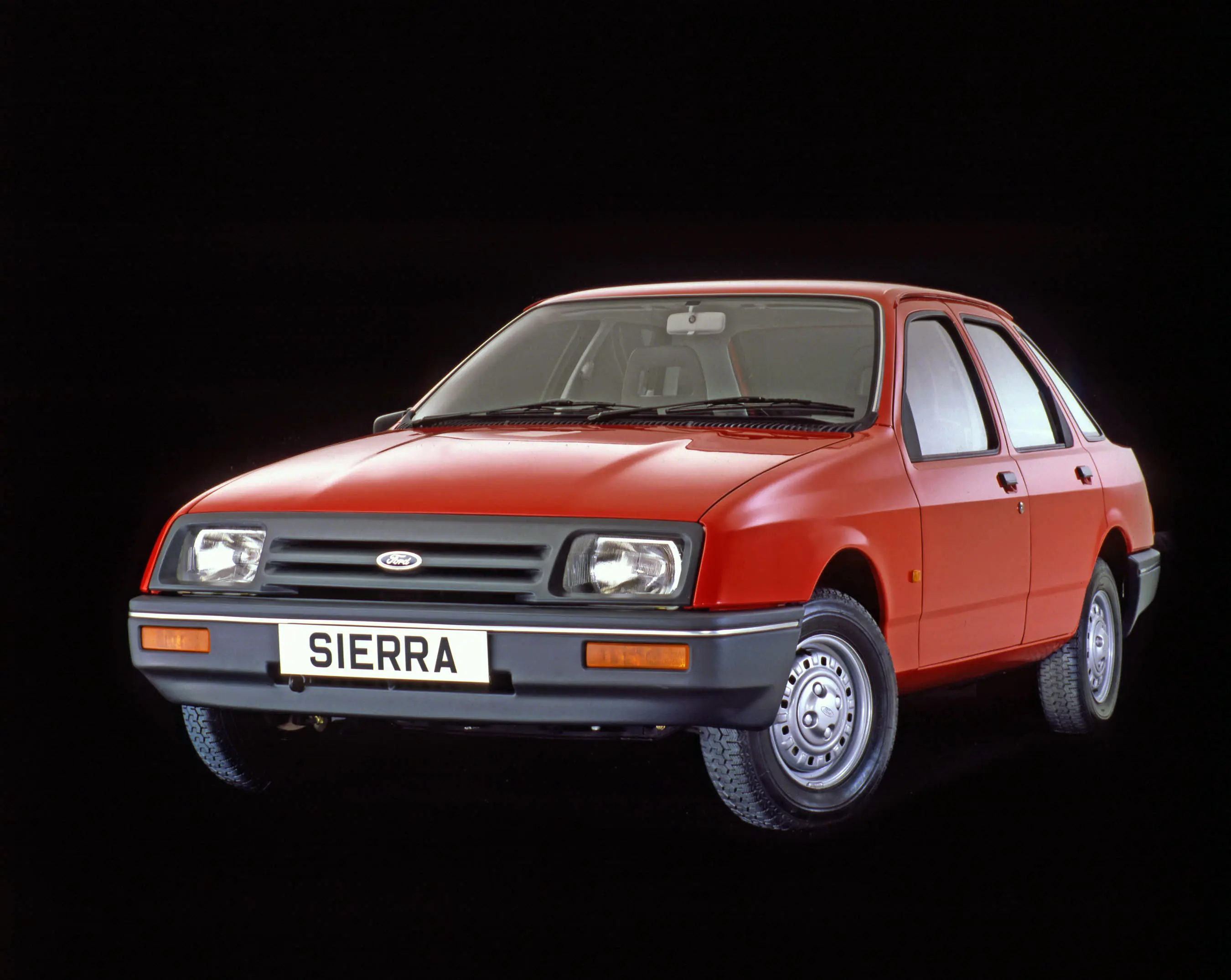40 YEARS OF THE FORD SIERRA
28 September 2022
On the 19th January 1982, BBC2 broadcast a memorable edition of their Arena documentary series - The Private Life of The Ford Cortina. The host of this tribute to one of Dagenham’s most famous products was Alexei Sayle as the world’s least reassuring travelling salesman. Just before the closing titles, he bemoans in the ‘Cortina Sandwich Bar’, “They are doing away our car for a poxy hatchback – I’m angry!”.
Of course, the Cortina’s impending demise was no secret at that time. Ford announced at the previous year’s Frankfurt Motor Show that its successor would be named the Sierra, with bodywork derived from their ‘Probe 3’ prototype. The “aerodynamic bodywork” caused mutterings in office canteens across the land, as did that hatchback. In terms of British cars, the Austin Maxi has never enjoyed the success that was its due, and the Chrysler/Talbot Alpine never enjoyed significant popularity. The recently launched Vauxhall Cavalier II may have been available with five doors, but Luton also provided a four-door version. After all, it was a proven fact that sample cases were far more secure in a separate boot.

And perhaps Ford GB’s most radical step was not naming the new model ‘Cortina Mk.VI’. Over the last two decades, the brand had come to define an entire market sector. Nor did it replace any existing product, as the role of the original ‘Consul Cortina’ of 1962 was to bridge the gap between the Anglia 105E and the Consul Classic. But when the company embarked on the £660 million Project Toni in 1978, it would mark the end of the famous name, plus the Taunus badge in Germany. The Sierra debuted on the 22nd September to a vast wave of publicity; magazine advertisements, a television commercial with the standard dramatic voiceover, and an excellent die-cast Corgi model.
Famously, Car magazine headlined the cover of the October 1982 edition with “SIERRA SHOCK! It really is a good car” and claimed, “It thoroughly deserves the tag ‘modern’ and more to the point, it is thoroughly worthy of the eventual millions who will buy it”. However, Autocar sounded a note of caution, noting Dagenham’s primary concern should not be its external rivals but “whether it would prove a worthy successor to the extremely popular Cortina, which sold well in spite of – or perhaps because of – its ageing but conventional layout”. Ford promised “Man and machine in perfect harmony”, but into 1983, too many buyers seemed to want the Sierra’s now heavily discounted predecessor.
The irony was that beneath that distinctive bodywork with its drag coefficient of 0.34, there was little to surprise a long-term Ford driver. The independent rear suspension may have been a departure from tradition, but the running gear and even the Sierra’s hierarchy of trim levels were eminently familiar. The base version, immediately recognisable via its dark plastic nose trim, boasted the luxury of “generous storage bins”. Should you want a locking fuel cap, front head restraints, a cigar lighter, a radio, a clock, and split rear seats, you had to aspire to L ownership. Meanwhile, the Ghia flagship was a genuinely opulent machine with its quad headlamps, elaborate sound system and “Chatsworth Fabric” upholstery.
It inevitably took a little time for the nation’s motorists – and fleet buyers – to become familiar with the Sierra’s virtues, but it would become the UK’s second best-selling car after the Escort. By the mid-1980s, it was becoming known as ‘The Salesman’s Spaceship’ – and few vehicles symbolised business success more than a “Champagne Gold” Ghia on the driveway. So, in tribute to 40 years of this crucial Ford, here is that launch advertisement; one that might have impressed even Alexei Sayle’s commercial traveller.
